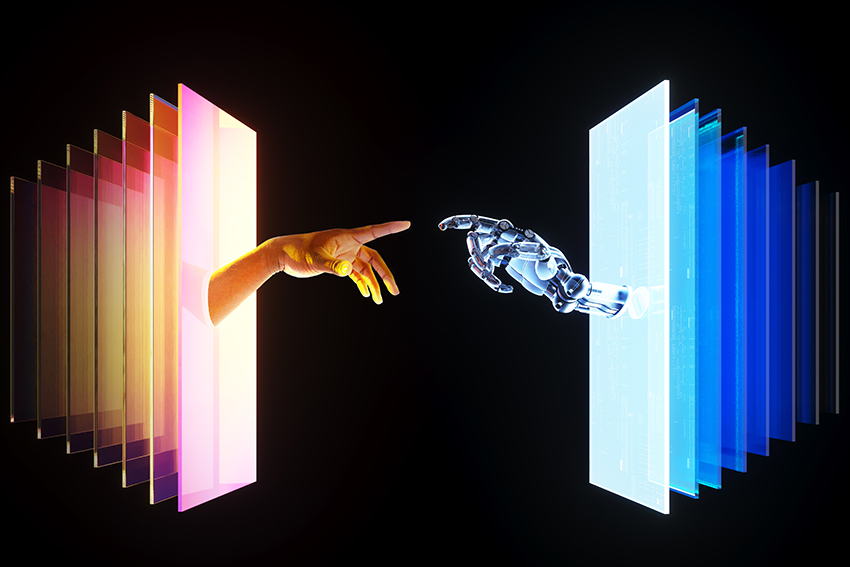29 November 2023
The Past, Present & Future of AI
.jpg)
The History of AI
About a century ago, humans wrote novels and movie screenplays about robots or something resembling a robot like the Tin Man in The Wizard of Oz. Starting in the 1950s, the birth of Machine Learning came about through the game Checkers from Computer Scientist Arthur Samuel. More Computer Scientists and other academics and practitioners got involved. However, there was no way to store data, let alone the enormous cost of having a computer back then. Only a few universities and big tech companies could explore and experiment.
Continuing in the 1950’s, those who attended various academic conferences in Computer Science, Cognitive Psychology, Economics, Electrical Engineering, Mathematics, and other fields defined Artificial Intelligence based on Mathematical Statistics. However, funding was a recurring problem. Artificial Intelligence and Machine Learning were too expensive to practice until recently.
Where We Are Now
We stand today at an exciting crossroads as Data Science, Machine Learning, and Artificial Intelligence transform nearly every field they touch. What began as obscure statistical techniques and theoretical machine learning algorithms has become a sweeping movement powering breakthrough innovations across industries.
Visionary researchers laid the mathematical foundations that enabled today's expansive progress. Social Sciences employ Reinforcement Learning to connect Recommendation Engines to streaming entertainment service providers, and arts harness Generative Models to push creative boundaries like Midjourney, and health sciences utilize Deep Learning to save lives, not to mention the impact of Large Language Models this year, like ChatGPT, yielding a global pivot that we still feel today.
In today’s age, AI has a variety of applications relevant to many different fields. One example is in Residential Real Estate Pricing where AI searches for images on the internet for new photographs showing a restored property, thereby updating the price to reflect new work done. Automated visual inspection of products and quality control on production lines. Sophisticated tools to edit, alter, and manipulate audio, images, and videos using AI-powered generation and editing techniques. Additionally, for years, self-driving cars in the automotive industry have utilized AI to get people to their destinations safely.
The possibilities are boundless.
From Statistics and Computer Science, Machine Learning has proven itself a universally applicable tool for nearly any domain. Its multidisciplinary character integrates the strengths of Optimization, Neuroscience, Linear Algebra, Control Theory, and more, enabling solutions for challenges in every discipline.
The Future of AI
We have only scratched the surface of Data Science and Machine Learning's potential. But the future looks bright as these technologies elevate humankind to new heights across all spheres of endeavor. The ideals of using knowledge and intelligence to improve lives are now within reach.
There will undoubtedly be more widespread adoption of Artificial Intelligence in business as companies leverage AI for competitive advantage as skills and tools become more accessible. AI assistants will continue advancing through models like Large Language Models, becoming useful for more complex conversations. The growth of Generative AI models for generating text, code, images, video, and other content will create new possibilities for creators, including combining multiple modes like text, vision, speech, and virtual reality, enabling more human-like interaction. Domain-specific AI customized for healthcare, sciences, transportation, finance, and other sectors will expand.
Accelerating progress, broad applicability, scalability, generativity, and economic incentives lead to a permanent global cultural shift with Data Science, Machine Learning, and Artificial Intelligence.
Conclusion
The future is bright for AI, and the nexus of the sciences, social sciences, and even the arts go beyond our present expectations with the exponential and continued growth of data quantities coupled with increasing quality of algorithmic development. As AI capabilities advance across all disciplines, we will witness profound progress and discovery.
Looking to learn more about the various applications of Artificial Intelligence? Explore our Certificate in Selected Topics In Artificial Intelligence, or contact infotech@ucsd.edu for more information.